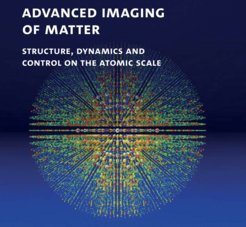CUI: Advanced Imaging of Matter enters Second Funding Phase – MPSD Celebrates Successful Evaluation of Excellence Cluster
The Excellence Cluster CUI: Advanced Imaging of Matter (CUI:AIM) has been positively evaluated following a successful review and is now set to enter a second seven-year funding phase under Germany’s Excellence Strategy, jointly supported by the federal and state governments. The Max Planck Institute for the Structure and Dynamics of Matter (MPSD), one of the founding applicants alongside Universität Hamburg (UHH), Deutsches Elektronen-Synchrotron (DESY), and European XFEL GmbH (XFEL), congratulates everyone involved on this major achievement.

At the heart of the Cluster’s research lies the question of how new functionalities in matter can emerge and be purposefully designed by precisely controlling atomic and molecular processes. Atoms bind to form solids, molecules interact and react—and as systems become more complex and larger, new functionalities arise. In order to observe, understand, and control these processes, 185 scientists from the four participating institutions have joined forces across the disciplines of physics, chemistry, and structural biology.
The Cluster combines outstanding basic research with a globally unique infrastructure located on the Science Campus Hamburg-Bahrenfeld. This includes state-of-the-art light sources, imaging techniques, and powerful computing resources that make it possible to visualize the dynamics of complex systems in real time and at the atomic scale. CUI:AIM purposefully links controllable quantum systems such as individual molecules with larger and more complex solid-state and nanosystems—a multiscale approach that opens up new scientific horizons.
MPSD contributes significantly to the Cluster’s scientific focus areas through several of its research groups. In the three central research areas—A) Designing dynamical emergence in quantum matter, B) Capturing emergent chemistry, and C) Exploring emergence in heterogeneous systems— researchers from the institute are working to uncover the fundamental principles behind novel material properties.
The continuation of the Cluster is met with great enthusiasm. Professor Andrea Cavalleri, Director at MPSD and Coordinator of Research Area A, emphasizes the importance of collaboration:
“The CUI excellence cluster has been an extraordinary multiplier of our scientific reach. It is THE venue where we develop new science at the interface between different disciplines, based on collaboration between our different institutions (MPSD UHH, DESY and XFEL). CUI uniquely captures the spirit of the Bahrenfeld campus, and the constantly expanding horizons in science made possible by excellent people and infrastructure.”
A particular focus of the Cluster is the promotion of early-career researchers. More than 80% of the Excellence funding is invested in the training and support of PhD students and postdocs in the early and mid-stages of their careers. Programs such as its dedicated graduate school, the Young Investigator Group Leader Program, and the Academic Career Toolkit set new standards in supporting scientific careers.
The successful evaluation confirms the scientific excellence and unique collaboration of the participating institutions. Looking to the future, CUI:AIM positions the City Of Hamburg as a global leader in the study of dynamic processes in matter.
The University of Hamburg has once again proven successful in Germany’s Excellence Strategy: All four of its existing Clusters of Excellence—including CUI: Advanced Imaging of Matter—will continue to receive funding from January 2026 onward. Alongside CUI:AIM, these include CliCCS (climate research), Quantum Universe (particle and astrophysics), and Understanding Written Artefacts (manuscript studies). Additionally, both the Universität Hamburg and the MPSD are participating in the newly approved cluster BlueMat, led by Hamburg University of Technology, which focuses on sustainable, water-activated materials.
